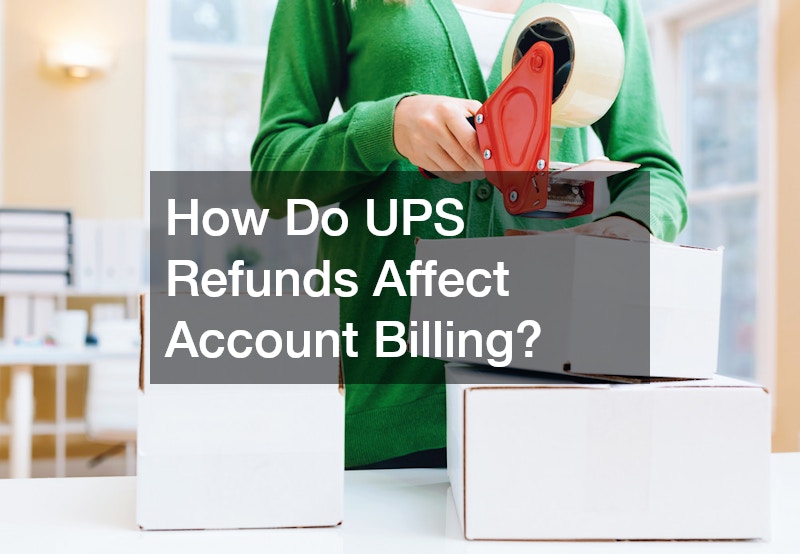
Understanding the UPS refund process is crucial for businesses and individuals who rely on timely deliveries. From eligibility to the steps required to obtain a refund, our guide provides valuable insights into getting your money back when shipments don’t go as planned.
1. Who is Eligible for a UPS Refund?
1.1 Eligibility Criteria
The eligibility criterion for a UPS refund includes shipments that are not delivered on time due to UPS’s fault. Delays caused by natural disasters or severe weather conditions usually do not qualify.
To apply for a refund, the package must be shipped via a service covered by the UPS Service Guarantee. It’s essential to review these conditions to ensure your shipment qualifies.
Additionally, requests must be filed within the specified timeframes, usually 15 days from the scheduled delivery date. Timely application is crucial to be considered for a refund.
1.2 Common Ineligible Scenarios
Some common ineligible scenarios for UPS refunds include delays due to incorrect addresses and human error on the sender’s part. Packages lacking the necessary documentation are also ineligible.
Refunds are not granted for non-guaranteed services or shipments that do not adhere to UPS terms and conditions. It’s important to know these scenarios to avoid futile refund requests.
Additionally, situations involving delays due to events beyond UPS’s control, like customs holds, are not eligible. Understanding the scope of these exclusions is crucial for planning shipments effectively.
2. How to Initiate a UPS Refund Request
2.1 Step-by-Step Process
To initiate a UPS refund request, start by logging into your UPS account and accessing your shipment history. From there, you can select the eligible shipment for which you seek a refund.
Next, you’ll need to follow the prompts to file a refund request, which may require inputting specific shipment details. Ensuring accuracy during this step is essential to avoid complications.
Finally, submit your request and receive confirmation via email. Keep track of this process for follow-ups regarding your refund status.
2.2 Necessary Documentation
When applying for a refund, you may need documentation like the shipment receipt and proof of the expected delivery date. These documents support your refund claim substantially.
Additional documents, such as proof of the shipping agreement and terms, can be beneficial. Providing comprehensive documentation can streamline the validation process.
Ensure all your documentation is clearly labeled and organized when submitting it online. This helps expedite the verification process for your refund request.
3. What is the UPS Money-Back Guarantee?
3.1 Overview of the Guarantee
The UPS Money-Back Guarantee is a policy that ensures customers can request their shipping costs back if a package does not arrive on time. This guarantee applies to a variety of UPS services worldwide.
Through this guarantee, UPS seeks to uphold accountability and customer satisfaction for reliable deliveries. It’s an assurance that aligns with UPS’s service commitments.
However, conditions apply, and the guarantee only covers services specified by UPS. Knowing these services is beneficial for planning logistics and shipments.
3.2 Limitations and Exclusions
Despite its benefits, the UPS Money-Back Guarantee has limitations such as exclusion during peak seasons and holidays. Certain regions and international destinations might also be excluded.
For instance, shipments delayed due to external factors like customs processes or trade sanctions do not fall under the guarantee. Familiarizing yourself with these exceptions can prevent misunderstandings.
Moreover, refunds are not applicable for days when no delivery is guaranteed, such as Sundays in some regions. It’s important to understand these exclusions when timing your shipments.
4. How Long Does it Take to Receive a UPS Refund?
4.1 Standard Processing Times
The standard processing time for a UPS refund is typically between 7 to 10 business days. This timeframe begins from the moment your refund request is approved.
Efficient processing depends on the accuracy of the information provided and adherence to guidelines. Awareness of these timeframes can assist in managing financial expectations.
However, the turnaround time can vary depending on multiple factors, including the time taken for initial claim verification. It’s advisable to monitor your email for updates from UPS.
4.2 Factors that May Delay Refunds
Delayed refunds might stem from incomplete or inaccurate documentation submitted during the claim process. Ensure all details are thorough for smoother processing.
External factors, such as system upgrades within UPS, can also impact processing times. Being informed about potential delays can help manage client expectations.
Lastly, high volumes of claims during peak seasons can also extend refund timelines. Understanding these factors helps adjust business scheduling accordingly.
5. How Do UPS Refunds Affect Account Billing?
5.1 Adjustments to Future Invoices
Once a refund is processed, adjustments are often made to future invoices, reflecting the returned amount. This ensures that the account balance accurately represents payments and refunds.
Check your subsequent invoices for these adjustments to confirm the refund application. Correct application of these adjustments is crucial for maintaining clear financial records.
Additionally, ensure all transactions are accounted for in financial planning, reinforcing the importance of the timely review of both digital and paper statements.
5.2 Tracking Refunds in Account Statements
Account statements provide a detailed record of refunds, allowing companies to track their status. Look for entries labeled specifically as “refund” or “credit memo.”
Regularly reviewing these statements helps avoid financial discrepancies and ensures accurate record-keeping. It’s part of good financial management practice.
Using UPS’s online tools, such as the Billing Center, can further simplify this tracking. Leveraging available resources can enhance your oversight of financial matters.
.
